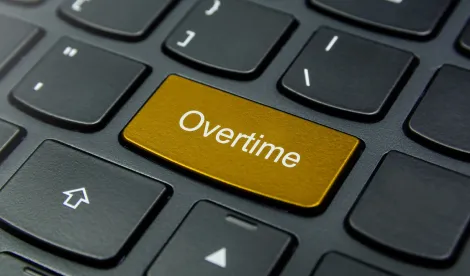On March 5, 2018, the California Supreme Court issued its decision in the Alvarado v. Dart Container Corporation of California case. The Court’s decision will have far reaching consequences for employers throughout the state by fundamentally changing how overtime is calculated. In short, the Court held that when calculating overtime in pay periods in which an employee earns a flat sum bonus, employers must divide the total compensation earned in a pay period by only the non-overtime hours worked by an employee.
Background
Plaintiff Hector Alvarado worked for Defendant Dart Container Corporation of California from September 2010 to January 2012. Alvarado filed a class action complaint against Dart in August 2012 for Dart’s alleged failure to provide overtime and several related derivative claims. The primary dispute was Dart’s calculation of employee overtime with respect to an attendance bonus paid to employees who worked on Saturdays and Sundays.
In order to encourage attendance on unpopular work days, Dart paid employees an “attendance bonus” of $15 per day for employees who worked on a Saturday or Sunday and completed their full work shift. When calculating overtime, Dart used a four step process: (1) multiply the number of overtime hours by the employee’s straight time (called the “base” rate); (2) add the total hourly pay for non-overtime work, any non-hourly compensation, and the base hourly pay for overtime work from step one; (3) multiply the total from Step 2 with the overtime hours during the relevant pay period (called the “premium”); and (4) add the base rate from step one with the premium from step three to get the total overtime compensation for the pay period.
Alvarado argued this method of calculation was unlawful, and that the regular rate of pay should be determined by allocating the attendance bonus only to non-overtime hours worked. The difference between Dart’s formula and Alvarado’s is that where Dart divides total compensation by total hours worked, Dart’s proposed formula divides only by regular hours.
The trial court granted Dart’s motion for summary judgment after concluding there was no valid California law or regulation on point, and relying on federal regulations allowing Dart’s calculation method. The court of appeal affirmed the trial court’s grant of summary judgment. The Supreme Court granted review to determine how a flat sum bonus should be factored into an employee’s regular rate of pay for purposes of calculating overtime.
The Supreme Court’s Decision
The Court described the issue before it as needing to determine if the divisor for purposes of calculating a per hour value of a bonus should be: (1) the number of hours the employee actually worked, including overtime; (2) the number of non-overtime hours worked; or 3) the number of non-overtime hours that exist in the pay period. The Court ultimately chose the second option and rejected Dart’s calculation method as unlawful.
The primary hurdle addressed by the Court was whether a policy in the DLSE Enforcement Manual was valid. The Court needed to address the enforcement policy because it was directly on point and supported Alvarado’s position. The DLSE Manual states: “If the bonus is a flat sum, such as $300 for continuing to the end of the season, or $5.00 for each day worked, the regular bonus rate is determined by dividing the bonus by the maximum legal regular hours worked during the period to which the bonus applies.” Because the enforcement policy was dispositive, the Court needed to determine whether it was a void underground regulation. After an exhaustive discussion about the deference given to administrative agencies, the Court determined the enforcement policy was a void underground regulation. However, the Court went on to explain the policy’s underlying interpretation of state law could still be correct. Indeed, the Court’s holding adopted the DLSE’s interpretation, despite finding the DLSE Manual was an invalid underground regulation.
Before reaching its decision, the Court explained it was guided by two longstanding principles: (1) there is a state policy favoring an eight-hour work day and six-day 40-hour workweek; and (2) the state’s labor laws are to be liberally construed in favor of worker protection. Relying on Labor Code section 510, the Court stated that a flat sum bonus must be treated “as if it were earned on a per-hour basis throughout the relevant pay period.” The Court went on to reason that, because the flat sum bonus at issue was payable even if the employee worked no overtime during the relevant pay period, it should be treated as being earned during only the non-overtime hours in the pay period. Therefore, only non-overtime hours should be considered when calculating the bonuses’ per-hour value. Accordingly, the Court adopted a new test for calculating the regular rate with flat sum bonuses that requires employers to calculate the regular rate using only non-overtime hours worked during the pay period.
Notably, the Court limited its decision to situations with flat-sum bonuses. Thus, production bonuses, piece rate bonuses, and many other bonuses will not be affected by this decision. Unfortunately, however, the Court’s decision will apply retroactively, and there will be significant consequences for employers following this decision.
Impact on Employers
Following the Court’s decision, employers must review their overtime pay practices and determine if they are compliant with this new formula.
Further, the most consequential provision of the Court’s decision is that it applies retroactively. Thus, it is imperative that employers review their policies and work with counsel to ensure their overtime pay practices comply with the requirements of this decision. Many employers may already face liability for their past practices, and it is essential that any unlawful practices are immediately cured to prevent future liability.


 />i
/>i

